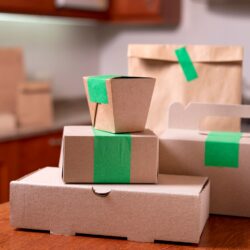In today’s fast-paced digital world, the humble printer still plays a critical role in offices, businesses, and even home workspaces. Whether you’re printing invoices, legal documents, school projects, or high-resolution graphics, the quality of your output depends heavily on one essential component: toner cartridges.
But what exactly are toner cartridges, how do they work, and what should you look for when replacing them? In this comprehensive guide, we’ll cover everything you need to know, from types and compatibility to tips for saving money and maintaining your printer’s performance.
What Are Toner Cartridges?
Toner cartridges are used in laser printers and photocopiers. Unlike inkjet cartridges that use liquid ink, toner cartridges contain a fine powder made up of plastic particles, carbon, and colouring agents. This powder is melted and fused onto paper using heat during the printing process.
Because of this powder-based technology, toner cartridges typically last longer and produce sharper, smudge-free prints, especially when dealing with high-volume printing tasks or professional-quality documents.
Toner Cartridges vs Ink Cartridges: What’s the Difference?
The main difference lies in the technology and purpose:
- Toner Cartridges: Used in laser printers, ideal for high-speed, high-volume printing with crisp text and long-lasting output.
- Ink Cartridges: Used in inkjet printers, better suited for photo-quality colour printing on specialty papers, but tend to be slower and less efficient for large batches.
If you frequently print documents in black and white or run a small business, toner cartridges offer better long-term value and efficiency.
Types of Toner Cartridges
There are several types of toner cartridges, and choosing the right one is essential for both printer performance and print quality.
- Original Equipment Manufacturer (OEM) Cartridges
These are made by the same brand as your printer (e.g., HP, Brother, Canon). OEM toner cartridges ensure perfect compatibility and consistent quality, but they tend to be the most expensive. - Compatible Toner Cartridges
These are third-party cartridges made to fit your specific printer model. Quality can vary between brands, but high-quality compatible toner cartridges often perform just as well as OEMs, at a fraction of the price. - Remanufactured Toner Cartridges
These are recycled OEM cartridges that have been professionally cleaned, refilled, and tested. They are eco-friendly and more affordable but require careful sourcing to avoid poor-quality products.
When purchasing toner cartridges, always ensure they are suited to your exact printer model and print volume needs.
How to Save Money on Toner Cartridges
Printing can get expensive, especially in high-demand environments. Here are some tips to reduce your toner cartridge costs without sacrificing quality:
- Buy in bulk: Many suppliers offer discounts for multi-packs.
- Use compatible or remanufactured cartridges: When sourced from reputable brands, these can save you up to 50%.
- Print in draft mode: For internal documents, this setting uses less toner.
- Use black-and-white printing: Colour toner is more expensive; only use colour when necessary.
- Store cartridges properly: Keep unopened toner cartridges in a cool, dry place to extend their shelf life.
Over time, these habits can make a noticeable difference in your printing expenses.
How to Know When to Replace Toner Cartridges
Most printers will display a warning message when toner cartridges are low, but here are some manual signs to watch for:
- Faded or patchy printouts
- Streaks or smudges on pages
- Printer error messages
- Slower-than-usual printing speeds
- Noticeable drop in print quality
Don’t wait until the cartridge is bone dry; running on empty can cause damage to your printer or reduce its performance.
Are All Toner Cartridges the Same?
Definitely not. While many toner cartridges may look similar, they can differ in:
- Yield capacity (pages printed per cartridge)
- Compatibility (specific printer models)
- Quality of powder toner used
- Environmental standards and recyclability
- Built-in chips or smart technology
Always check the specifications and reviews before making a purchase. Poor-quality toner cartridges can lead to leaks, inconsistent print quality, or even voided printer warranties.
Eco-Friendly Printing: What to Do With Used Toner Cartridges
Used toner cartridges should never be tossed in the regular bin. Here’s how to dispose of them responsibly:
- Return to manufacturer: Most big brands offer free recycling programs.
- Office supply stores: Many retailers have drop-off bins for used cartridges.
- Recycling services: Use local e-waste recycling companies that accept toner cartridges.
Recycling not only helps the environment but also supports the circular economy of reusing parts and materials.
Final Thoughts
Understanding your toner cartridges isn’t just about maintaining your printer; it’s about ensuring print quality, saving money, and reducing waste. Whether you’re managing an office or running a busy household, choosing the right toner cartridges makes a significant difference in daily operations.
By knowing what to look for, how to save, and when to replace, you’ll stay ahead of your printing needs and get the most value out of your machine.
So the next time your printer signals it’s low, don’t just hit “order.” Take a moment to choose the right toner cartridges that suit your goals for performance, budget, and sustainability.




